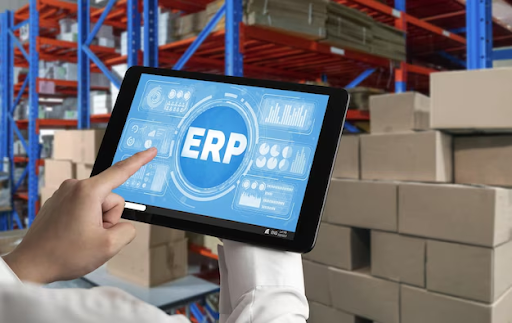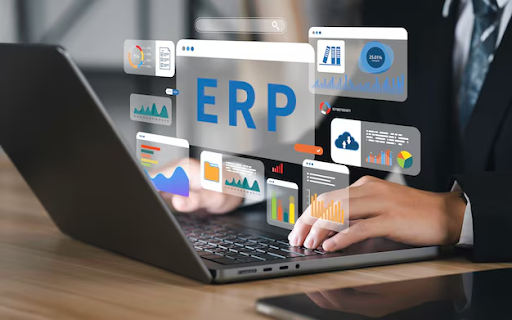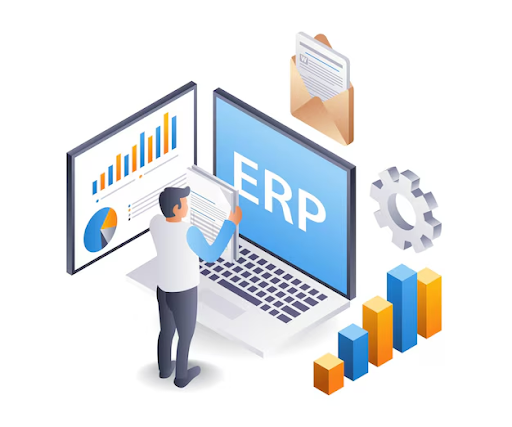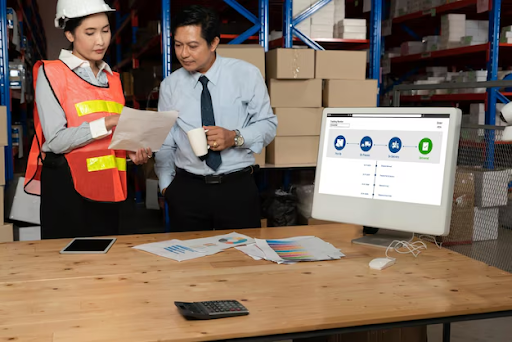Minimizing waste and enhancing operational efficiency are the top priorities of every business today. This article will introduce you to how the ERP system identifies waste and optimizes resource usage, thereby helping your business save costs and increase profits!
Read more: What is ERP?
1. ERP helps reduce the use of paperwork and storage.

As the amount of data increases, it means that businesses need more resources for storage. The ERP system helps businesses optimize resources from personnel to manual tasks, thereby reducing unnecessary paperwork and storage space. This not only helps optimize resource use but also contributes to environmental protection, especially for corporations or large offices, as they have to handle and dispose of a large volume of business documents to ensure information security.
2. Effective inventory management

Inventory management plans and poor control of excess inventory can also lead to waste issues. Therefore, managing inventory with an ERP system is very important because it helps businesses allocate and control their goods in a more detailed and efficient manner.
For example, if the company operates in the F&B sector, the ERP system can help you track the expiration dates of imported products and ingredients. The inventory management module in the ERP software helps report the amount of food or raw materials wasted and identifies the cause of the waste as improper storage, spoilage, leakage, or human error. In addition, you can also find out the quantity of unsold raw materials through this application, thereby assessing which products are the key ones for the business and which products incur more costs than their selling price.
3. Reduce overproduction

One of the significant causes of waste in production is the overproduction of goods. This often happens when the planning and demand forecasting process is inaccurate, or due to the lack of effective reporting tools.
Imagine you are producing t-shirts. If the demand forecast is incorrect, you might produce too many XL shirts while size S sells very well. This leads to a situation of excessive inventory, which is "stuck" in the warehouse and does not generate revenue.
With the ability to automate the creation of sales and inventory reports, ERP provides you with an overview and detailed insight into the business situation. You will know exactly which products are selling well, which ones are overstocked, allowing you to make timely production adjustments. For example, if the data from the ERP shows that size S t-shirts are always sold out while size XL t-shirts are piling up, you can decide to increase the production of size S t-shirts while reducing the production of size XL t-shirts. Thanks to that, you not only minimize waste of materials and labor but also better meet customer needs.
4. Optimize the Route

With ERP, planning and executing deliveries become smarter. The system has the ability to automatically calculate the shortest routes, save fuel, and minimize transportation time, thereby significantly reducing operating costs.
For example, for a fast delivery company, ERP can analyze data on customer locations, the volume of goods, and traffic conditions to create optimal delivery routes, helping drivers avoid congested roads, shorten delivery times, and enhance customer satisfaction. Not only does optimizing logistics bring economic benefits, but it also contributes to environmental protection. By minimizing the number of transport vehicles and shortening travel distances, businesses can significantly reduce carbon dioxide emissions and limit negative environmental impacts. Businesses not only reduce costs and increase productivity but also enhance brand reputation and contribute to the sustainable development of the community.
5. Increase transparency

The ERP system has the ability to clearly display the overall performance of the business through dashboards in the interface to provide metrics related to the operations of your business. Through the visual dashboards, you can easily monitor overall performance, from sales, profits, to production efficiency and inventory management. For example, the production department can quickly identify which steps are causing delays, allowing them to adjust the process to increase productivity. Or, the finance department can immediately grasp the cash flow situation, forecast upcoming expenses, and make reasonable investment decisions.
6. Deep analysis

ERP not only provides dry numbers but also allows you to delve deeply into each transaction and each product. For example, you can compare the material costs from different suppliers to find the optimal choice, or track the journey of an order from placement to delivery to identify and resolve any arising issues. Thanks to ERP, business decisions are no longer based on intuition but are made based on accurate and comprehensive data.
7. The collaboration between departments

In reality, many businesses are still facing the issue of poor coordination. This often happens when the workflows between departments are not synchronized, leading to delays, resource wastage, and decreased productivity.
By integrating all business activities into a unified platform, ERP helps departments share information quickly and accurately. Work processes are automated, minimizing manual intervention and the risk of errors. Specifically, in the Odoo ERP system, when the sales department creates a new order, the system will automatically generate a corresponding accounting entry. This helps the accounting department easily track and manage the expenses arising from purchasing activities. In addition, ERP also provides reporting and data analysis tools, helping managers make accurate and timely decisions.
8. Product Quality Control

Product defects are not just isolated incidents but a domino effect that causes many serious consequences. When a product is defective or does not meet standards, businesses not only waste materials and labor but also face the risk of production delays, reduced reputation, and loss of customers.
To address this issue, ERP modules such as Quality and Product Lifecycle Management (PLM) have emerged, providing a comprehensive solution for product quality management. With Odoo Quality, you can establish a strict quality control system, from the raw material stage to the final product.
Suppose your company produces shoes. With Odoo Quality, you can inspect the leather quality upon warehouse entry, check the stitching after completing the sole, and inspect the final product before packaging. If a batch of leather does not meet the durability standards, the system will automatically send a notification to the purchasing and production departments. In addition, the system will identify the causes of frequent errors, thereby proposing measures to improve the production process. Thanks to Odoo Quality, your business will significantly reduce the number of defective products, enhance product quality, shorten production time, and increase customer satisfaction.
9. Enhance efficiency with storage Cloud

The transition of IT systems to the cloud platform is not just a trend but also an intelligent solution for businesses to save costs and enhance operational efficiency. Research shows that businesses can reduce total software ownership costs by 30-40% when applying this solution. By eliminating the need to invest in hardware, infrastructure, and personnel to manage on-premises systems, businesses can focus their resources on core activities.
For example, instead of making a large investment to purchase and maintain servers, businesses can rent virtual server resources on the cloud as needed. This helps businesses flexibly scale their systems up or down easily, avoiding resource waste when demand changes.
The use of cloud services also helps reduce the negative impact on the environment. Leading cloud providers such as Google Cloud Platform (GCP) and Amazon Web Services (AWS) have committed to building data centers that use renewable energy and achieve high energy efficiency. This helps reduce carbon emissions and protect the environment.
10. Make better decisions with real data

One of the main purposes of implementing an ERP system is to collect, aggregate, and store data and information about the entire operations of the business in real-time. ERP software users can configure the measurement parameters to be displayed for each project. Regardless of whether it involves Accounting, Sales, or Inventory Management, real-time data has the potential to help them identify which areas bring the most value or are not profitable. This creates more opportunities for businesses to promote effective strategies and reduce overproduction or excessive inventory of inputs.
To demonstrate how real-time data can enhance the decision-making process, let's explore the dashboard feature in the production system at Odoo. Suppose your control panel shows that production line A is operating slower than the other lines and the amount of defective products from this line is increasing. Thanks to the control panel, you can review the specifications of the machinery, the quality of the input materials, or the skills of the workers to identify the root cause of the problem. From there, it is easy to adjust the speed of the production line, replace machine components, or enhance training for workers. If the issue cannot be resolved in the short term, you may decide to transfer part of the work to another line or invest in a new production line.
The dashboard is just one of the many features of ERP that helps provide real-time data. Thanks to these features, businesses can make decisions more quickly, accurately, and efficiently, thereby increasing productivity, reducing costs, and boosting profits.
11. Conclusion
The implementation of the ERP system has helped our business identify and eliminate wasteful activities, optimizing resource usage effectively. Thanks to that, we have saved costs, increased productivity, and enhanced competitiveness. In the future, with the development of new technologies such as artificial intelligence and the Internet of Things, ERP will play an even more important role in helping businesses adapt to market changes. Are you ready to explore the limitless potential that ERP brings to your business? Please contact us for consultation and support.